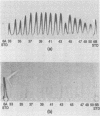Abstract
The hydrolyses of the immunologically cross-reactive and constitutionally isomeric group 6 pneumococcal polysaccharides, types 6A and 6B, were investigated by 31P nuclear magnetic resonance spectroscopy, gel filtration through Sepharose 4B, reducing-sugar analysis, and rocket immunoelectrophoresis. Phosphorus nuclear magnetic resonance spectroscopy showed that cleavage of the repeating-unit phosphodiester linkages at pH 10, 60 degrees C was considerably faster (greater than 10(3) ) for the type 6A than the type 6B polysaccharide. Under these reaction conditions, 31P nuclear magnetic resonance kinetic measurements showed that the Na+ form of the type 6A polysaccharide underwent phosphodiester-linkage hydrolysis two times slower than the corresponding Ca+2 form; a stoichiometrically excess amount of Ca+2 caused a 30-fold enhancement of the latter hydrolysis rate. The spectroscopic characterization of phosphorus-containing end groups resulting from hydrolysis of the type 6A polymer provided additional mechanistic information. Heating the type 6A and 6B polysaccharides at 56 degrees C for various times led to gel filtration coefficients of distribution (Kd values) which indicated that the type 6A material underwent size reductions considerably faster than did the type 6B antigen; these increased Kd values qualitatively correlated with the loss of immunochemical reactivity measured by rocket immunoelectrophoresis. The application of a statistical theory to the depolymerization of the type 6A and 6B polysaccharides was consistent with random bond cleavage, as evidenced by the calculated versus measured gel filtration patterns. Although the molecular changes causing the size reductions were not fully elaborated, it was established that the acetal linkages of the type 6A and 6B polysaccharides were comparatively resistant to hydrolysis and that depolymerization by hydrolysis of the phosphodiester linkage was a major factor only in the type 6A structure. It was concluded that the hydrolytic stability of the type 6B antigen would favor its use in the polyvalent pneumococcal vaccine rather than the cross-reactive, but comparatively unstable, type 6A polysaccharide, if all other factors are equal.
Full text
PDF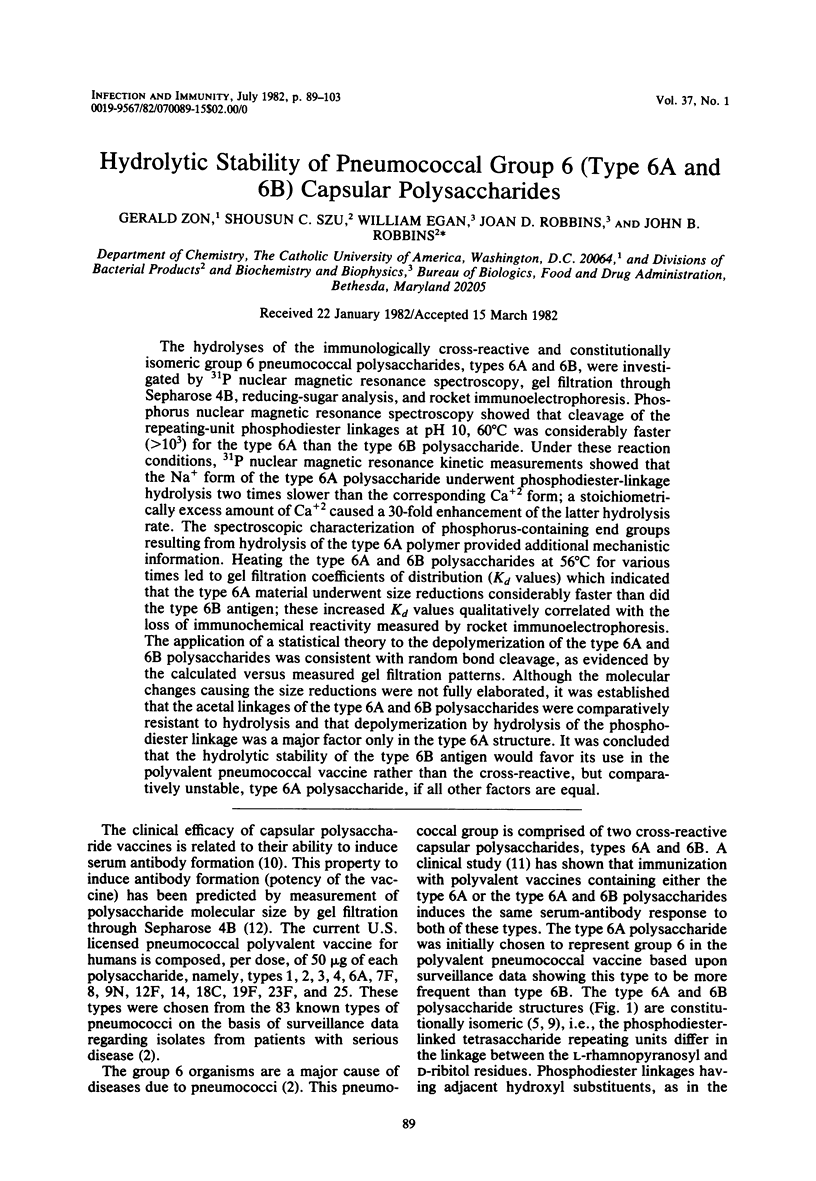
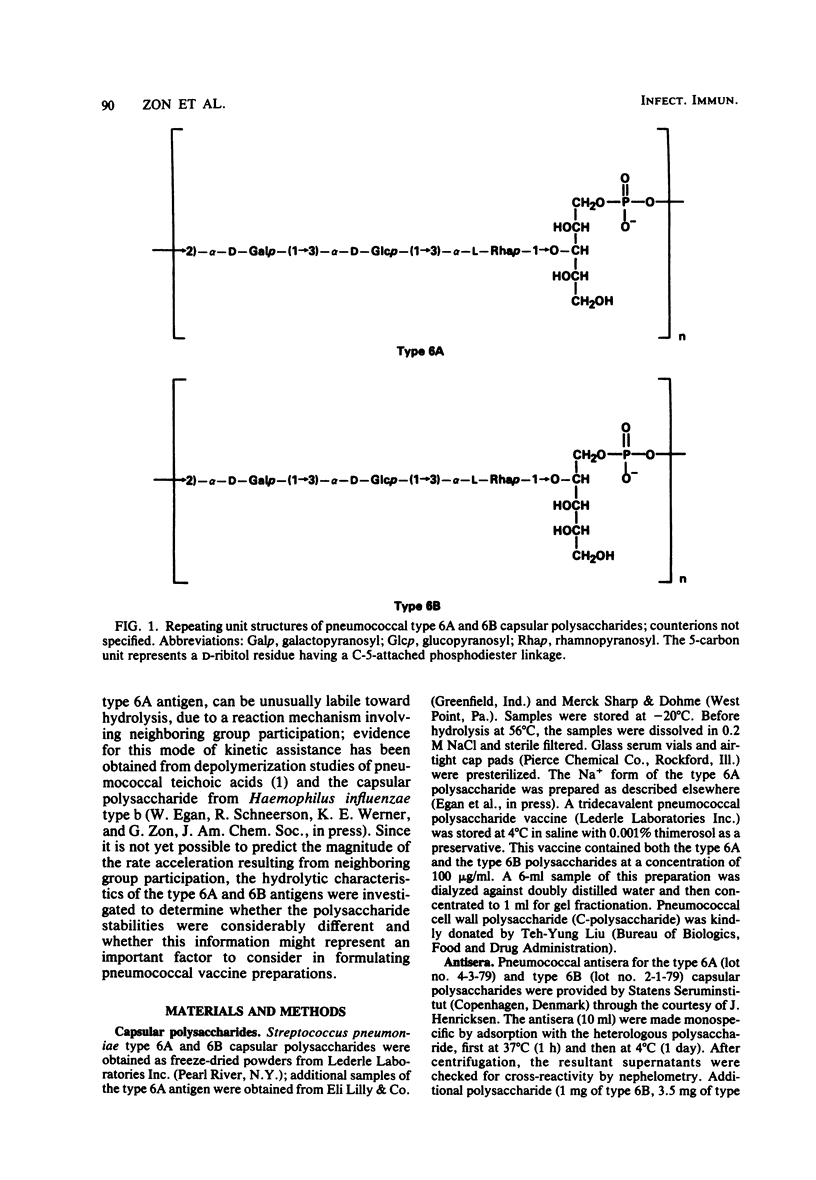
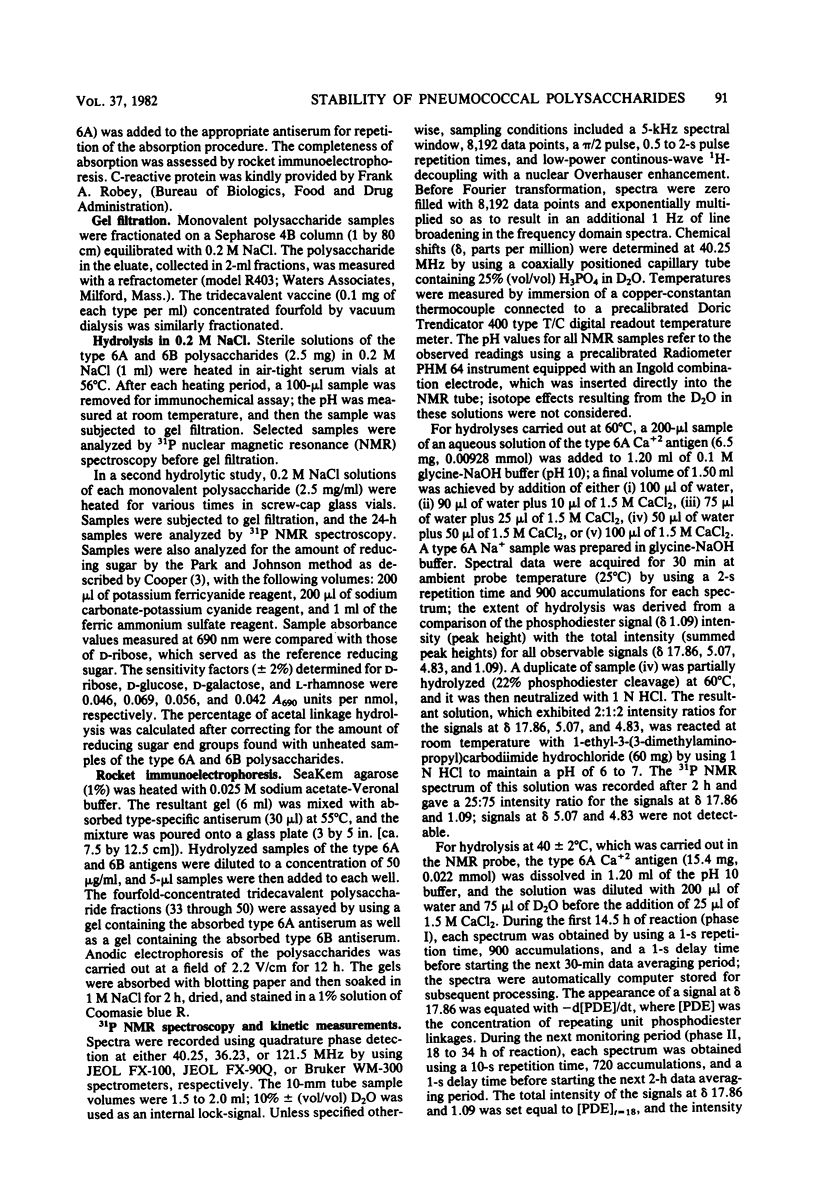
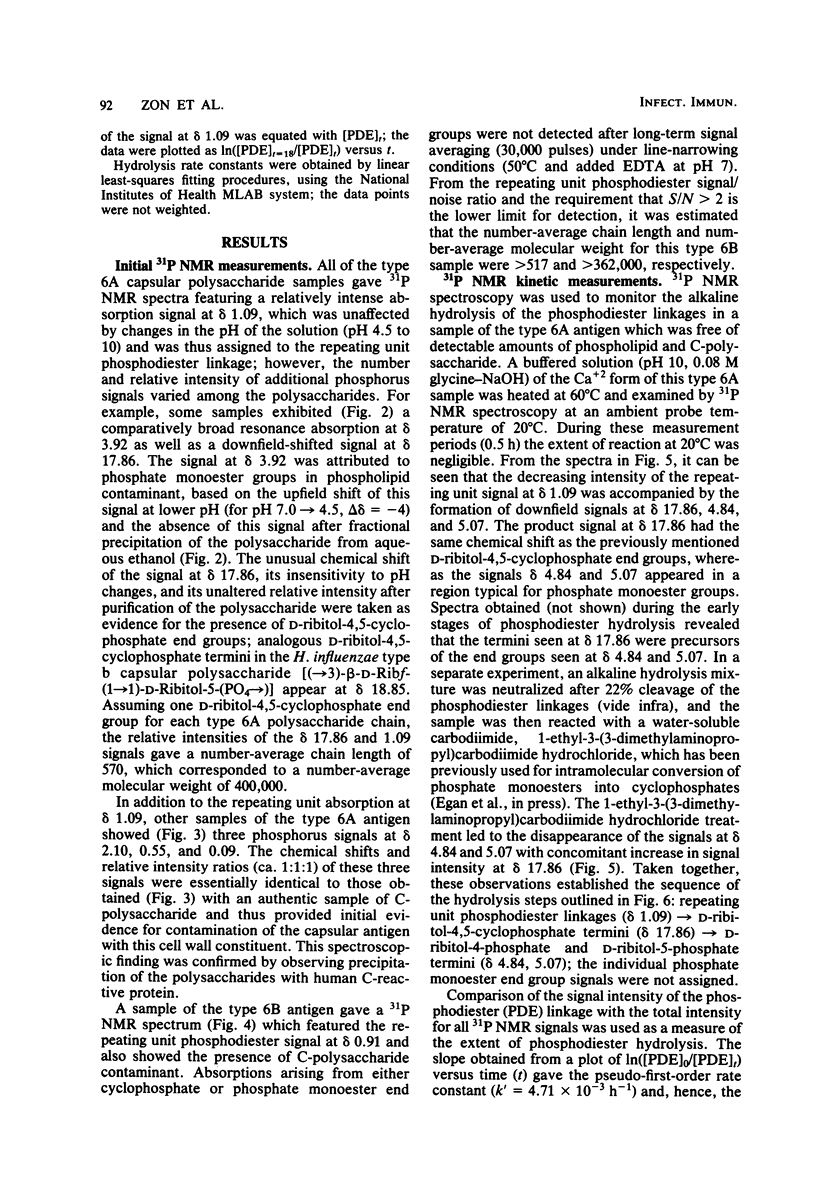
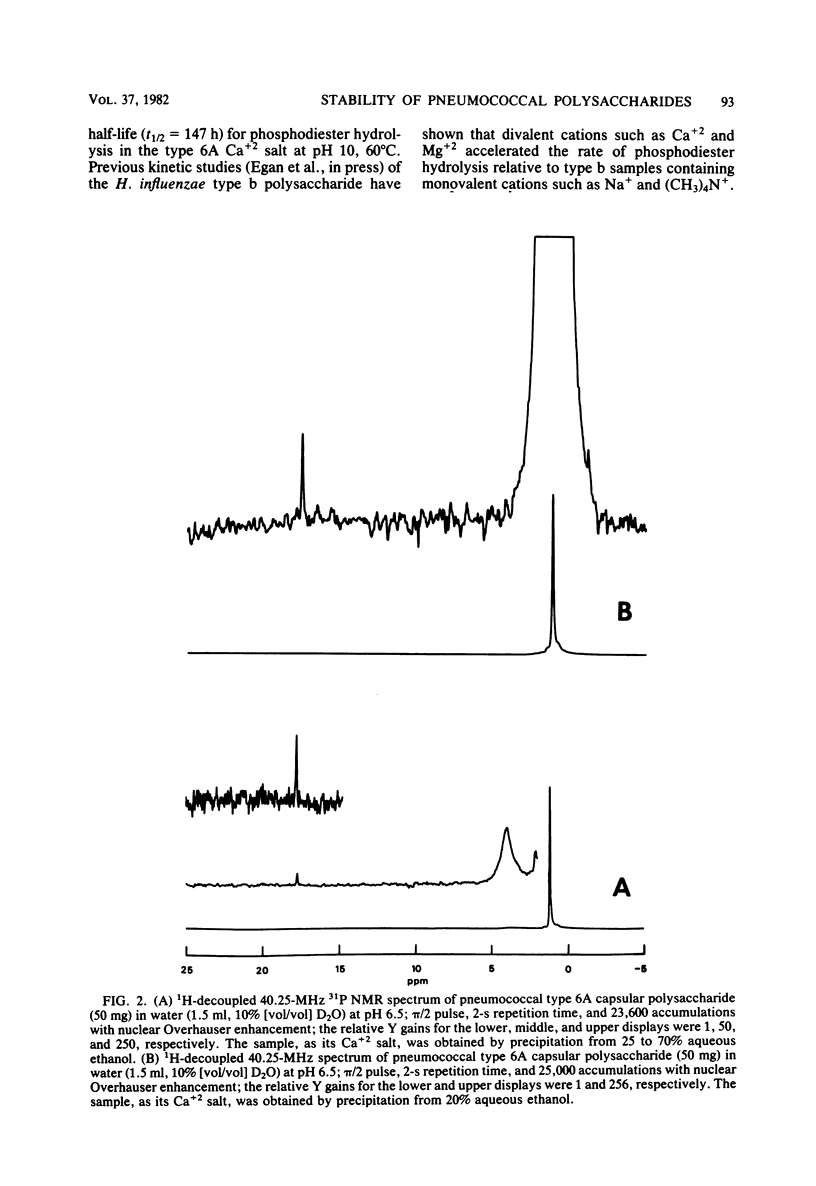
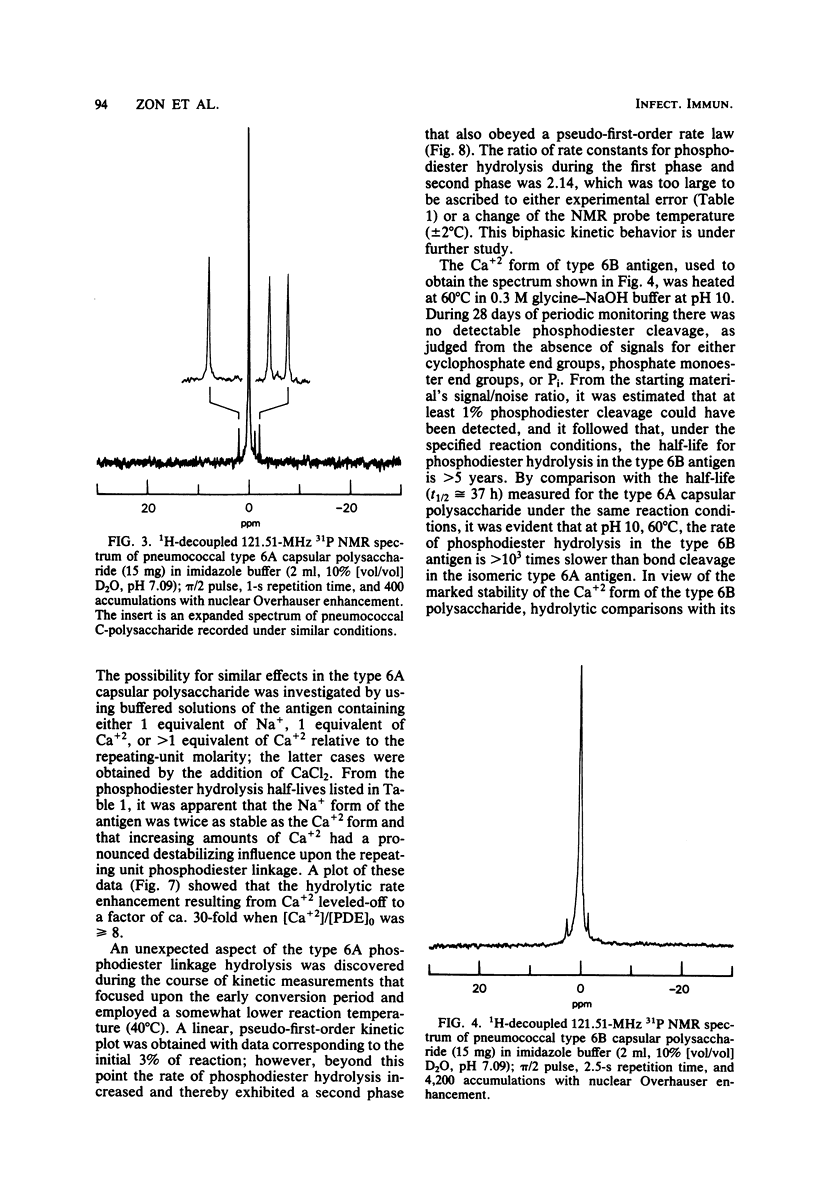
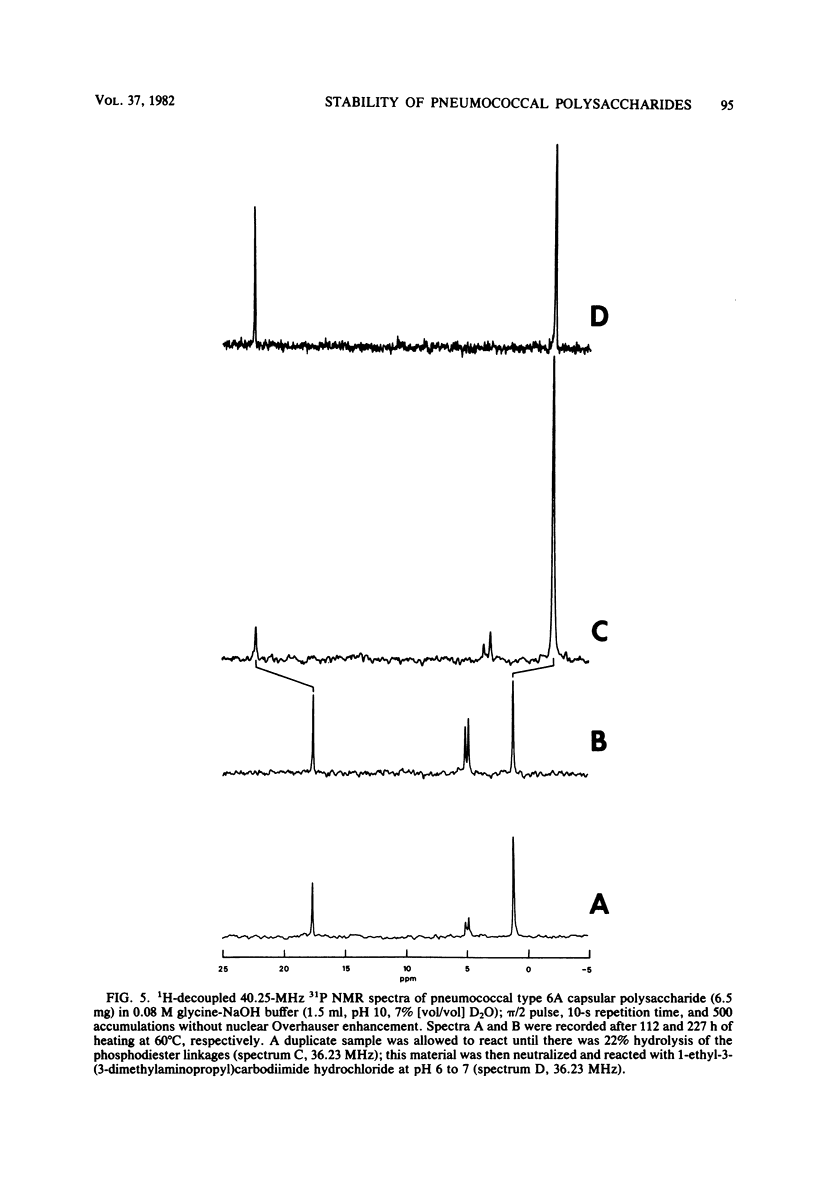
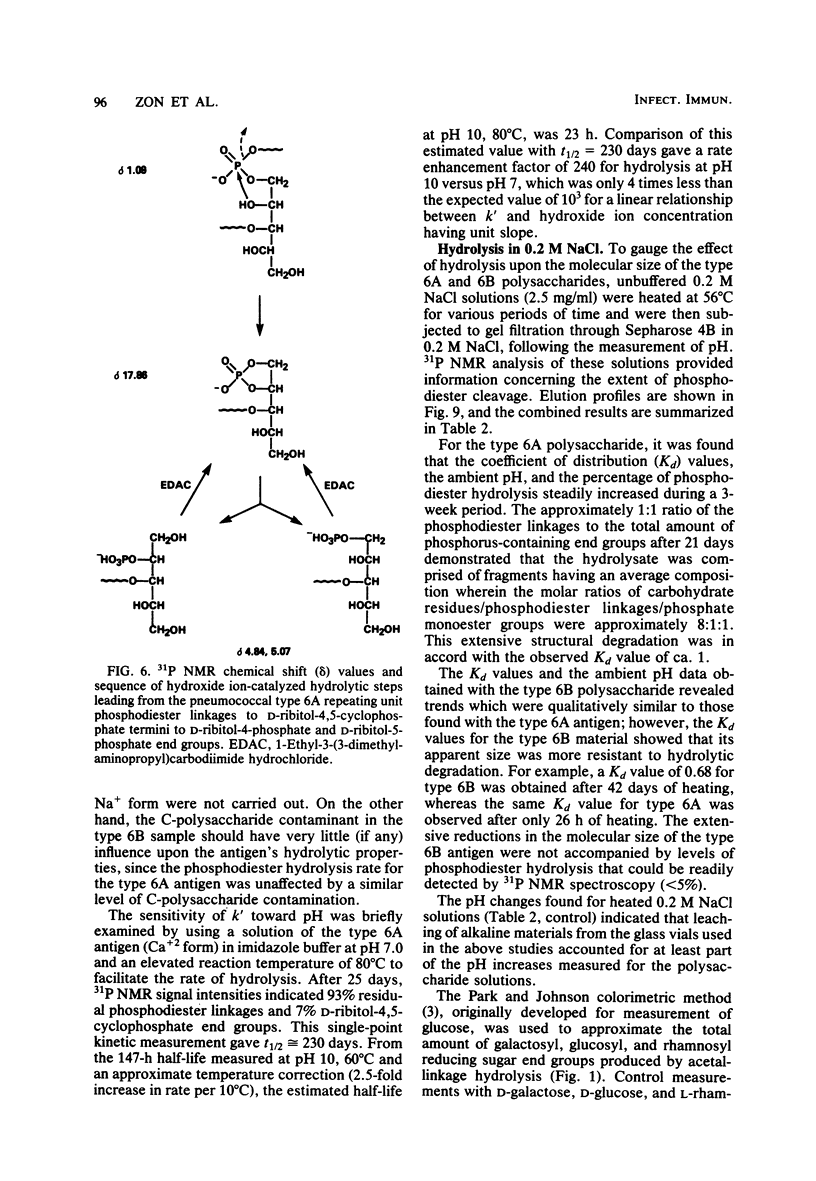
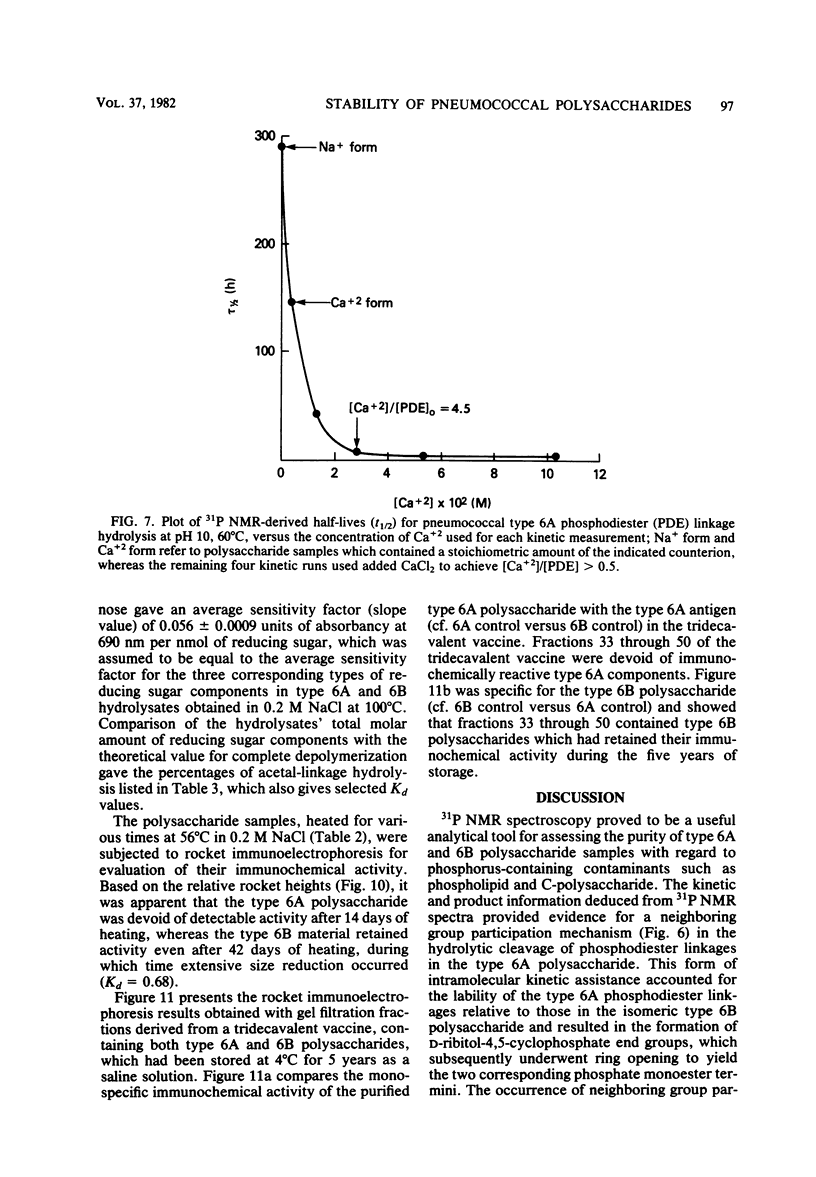
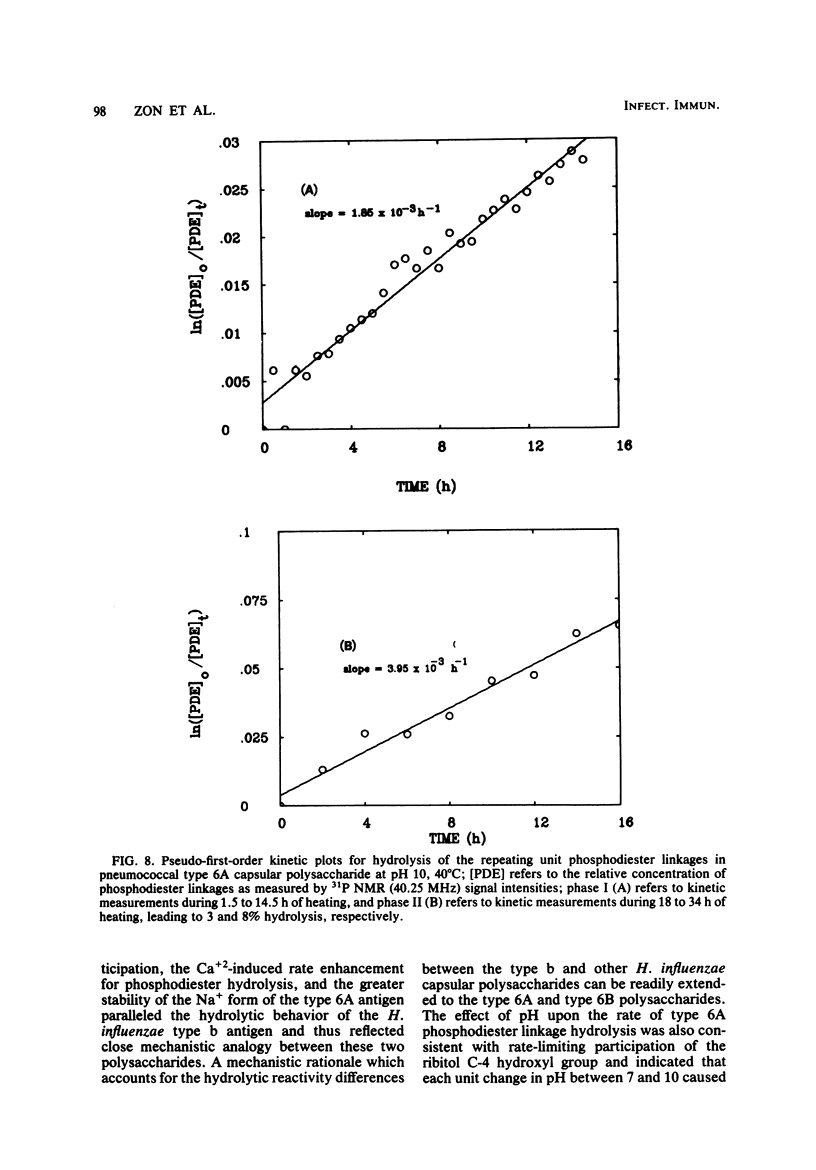
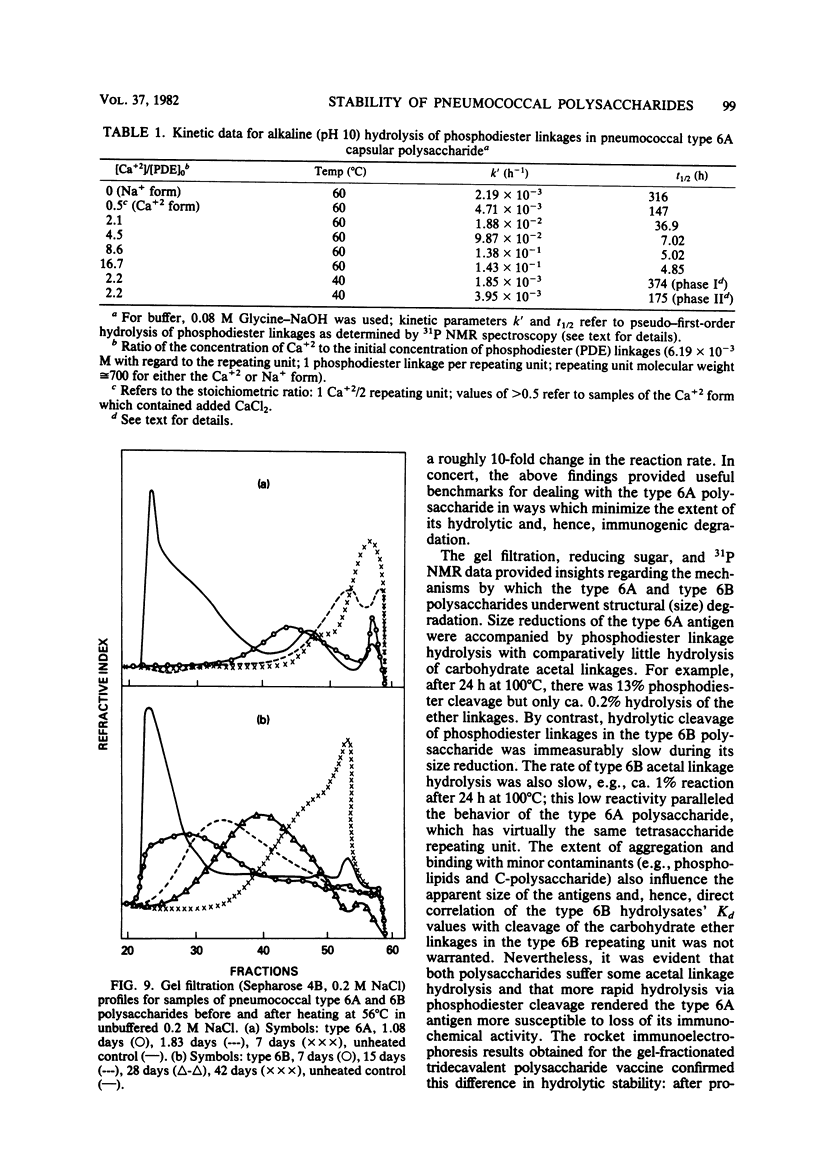
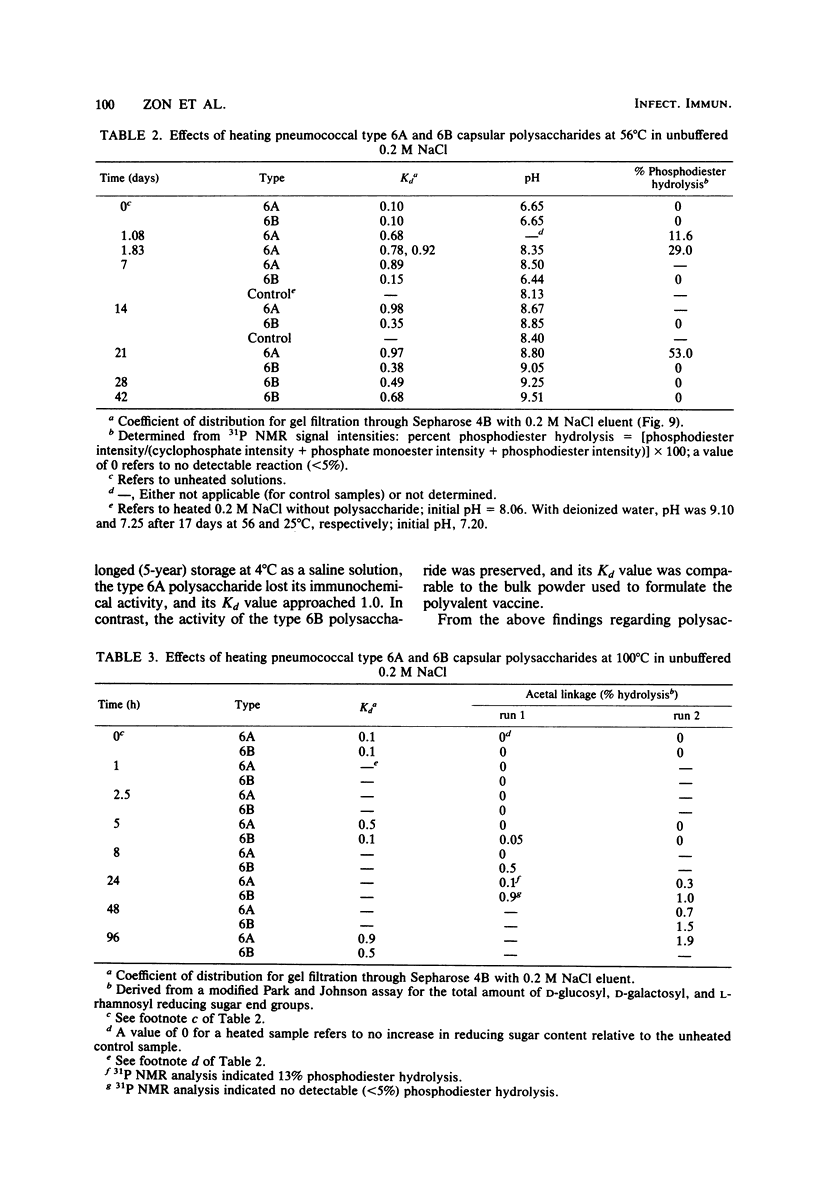
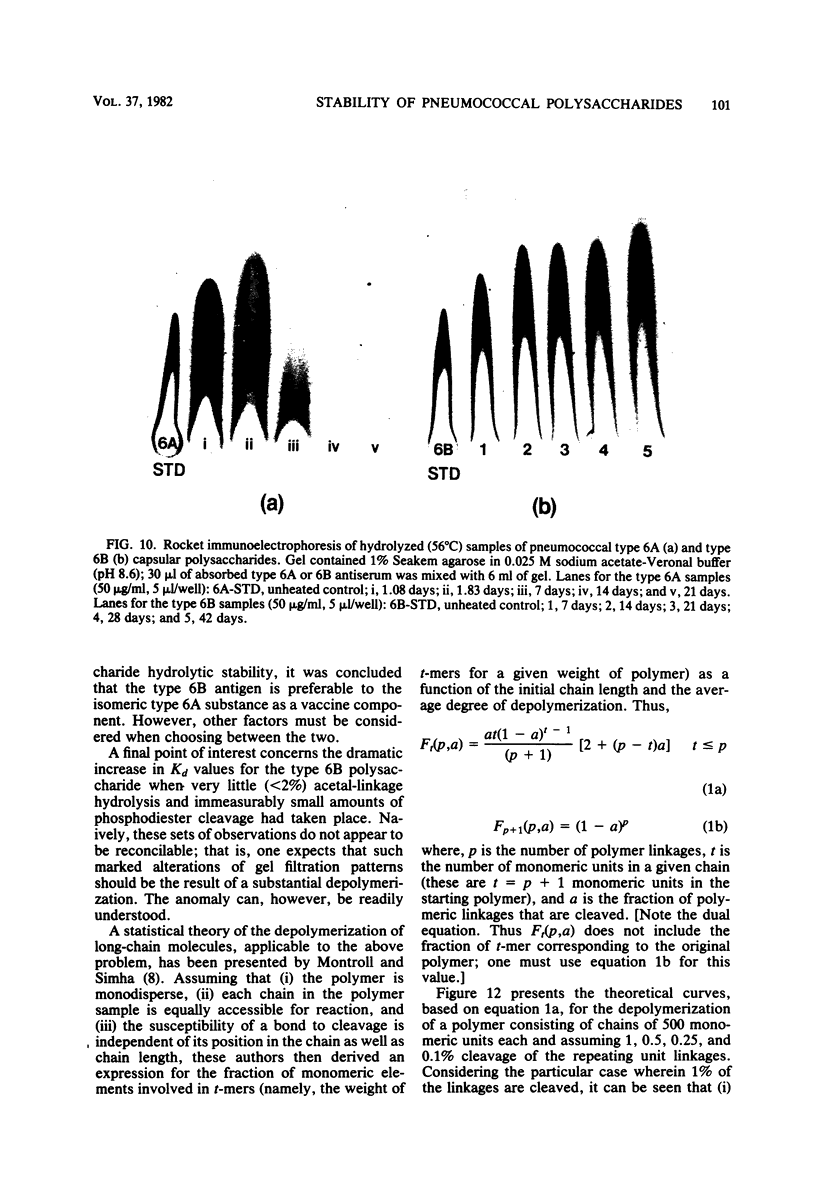
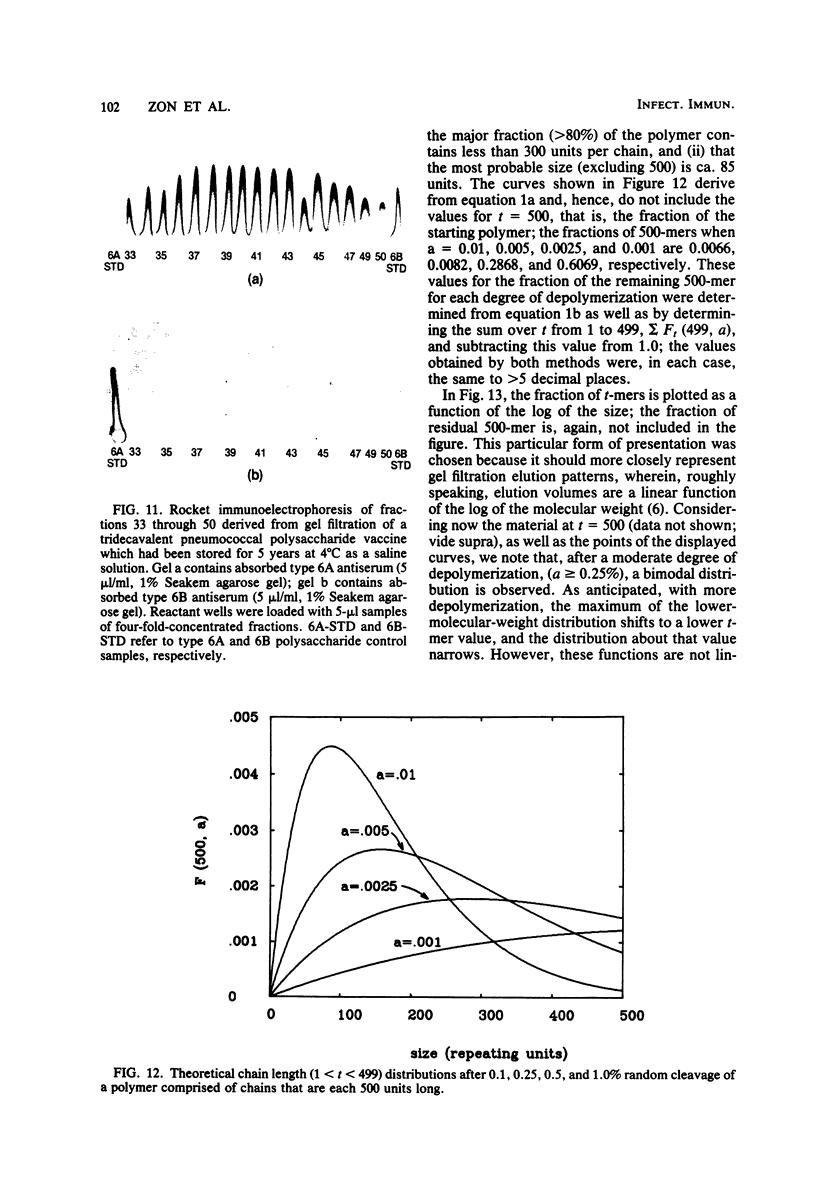
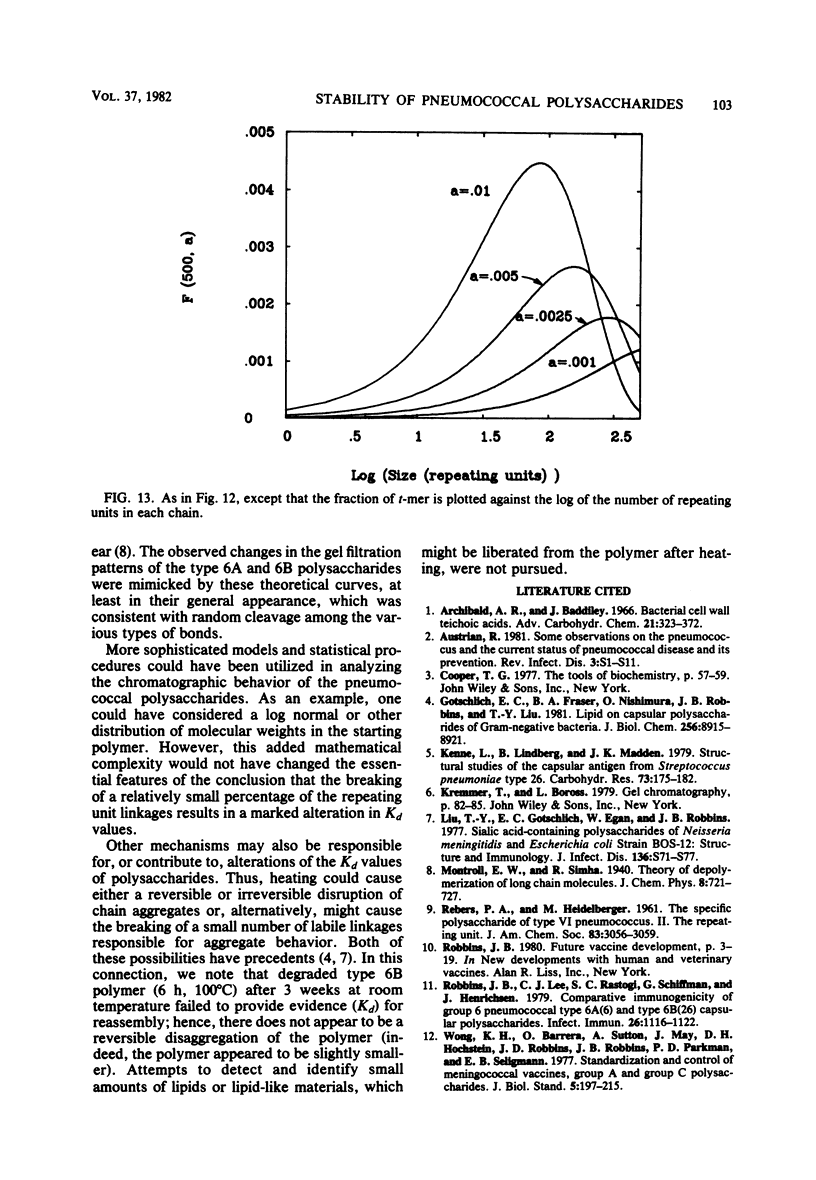
Images in this article
Selected References
These references are in PubMed. This may not be the complete list of references from this article.
- Archibald A. R., Baddiley J. The teichoic acids. Adv Carbohydr Chem Biochem. 1966;21:323–375. doi: 10.1016/s0096-5332(08)60320-3. [DOI] [PubMed] [Google Scholar]
- Gotschlich E. C., Fraser B. A., Nishimura O., Robbins J. B., Liu T. Y. Lipid on capsular polysaccharides of gram-negative bacteria. J Biol Chem. 1981 Sep 10;256(17):8915–8921. [PubMed] [Google Scholar]
- Kenne L., Lindberg B., Madden J. K. Structural studies of the capsular antigen from Streptococcus pneumoniae type 26. Carbohydr Res. 1979 Aug;73:175–182. doi: 10.1016/s0008-6215(00)85487-7. [DOI] [PubMed] [Google Scholar]
- Liu T. Y., Gotschlich E. C., Egan W., Robbins J. B. Sialic acid-containing polysaccharides of Neisseria meningitidis and Escherichia coli strain Bos-12: structure and immunology. J Infect Dis. 1977 Aug;136 (Suppl):S71–S77. doi: 10.1093/infdis/136.supplement.s71. [DOI] [PubMed] [Google Scholar]
- Robbins J. B., Lee C. J., Rastogi S. C., Schiffman G., Henrichsen J. Comparative immunogenicity of group 6 pneumococcal type 6A(6) and type 6B(26) capsular polysaccharides. Infect Immun. 1979 Dec;26(3):1116–1122. doi: 10.1128/iai.26.3.1116-1122.1979. [DOI] [PMC free article] [PubMed] [Google Scholar]
- Wong K. H., Barrera O., Sutton A., May J., Hochstein D. H., Robbins J. D., Robbins J. B., Parkman P. D., Seligmann E. B., Jr Standardization and control of meningococcal vaccines, group A and group C polysaccharides. J Biol Stand. 1977;5(3):197–215. doi: 10.1016/s0092-1157(77)80005-x. [DOI] [PubMed] [Google Scholar]




